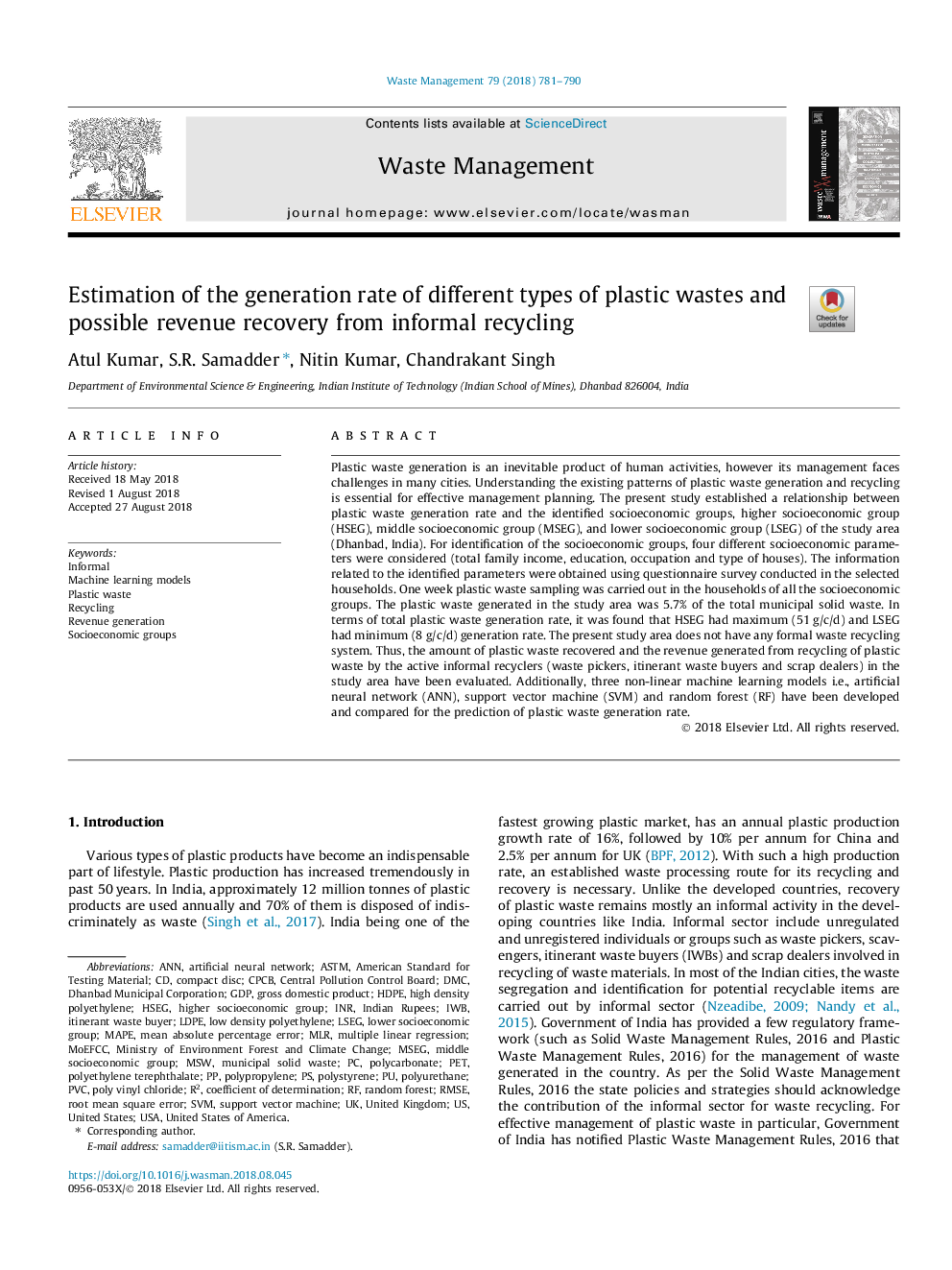| Article ID | Journal | Published Year | Pages | File Type |
|---|---|---|---|---|
| 11033287 | Waste Management | 2018 | 10 Pages |
Abstract
Plastic waste generation is an inevitable product of human activities, however its management faces challenges in many cities. Understanding the existing patterns of plastic waste generation and recycling is essential for effective management planning. The present study established a relationship between plastic waste generation rate and the identified socioeconomic groups, higher socioeconomic group (HSEG), middle socioeconomic group (MSEG), and lower socioeconomic group (LSEG) of the study area (Dhanbad, India). For identification of the socioeconomic groups, four different socioeconomic parameters were considered (total family income, education, occupation and type of houses). The information related to the identified parameters were obtained using questionnaire survey conducted in the selected households. One week plastic waste sampling was carried out in the households of all the socioeconomic groups. The plastic waste generated in the study area was 5.7% of the total municipal solid waste. In terms of total plastic waste generation rate, it was found that HSEG had maximum (51â¯g/c/d) and LSEG had minimum (8â¯g/c/d) generation rate. The present study area does not have any formal waste recycling system. Thus, the amount of plastic waste recovered and the revenue generated from recycling of plastic waste by the active informal recyclers (waste pickers, itinerant waste buyers and scrap dealers) in the study area have been evaluated. Additionally, three non-linear machine learning models i.e., artificial neural network (ANN), support vector machine (SVM) and random forest (RF) have been developed and compared for the prediction of plastic waste generation rate.
Keywords
HDPECPCBMSWRMSEASTMMLRLDPEINRCentral pollution control boardIndian rupeesDMCANNMAPEIWBUnited States of AmericaUnited StatesUSARecyclingGross domestic productGDPRandom forestCompact discMultiple linear regressionRoot mean square errorMunicipal solid wastePlastic wasteArtificial Neural Networkcoefficient of determinationInformalSVMSupport vector machineMachine learning modelsmean absolute percentage errorUnited KingdomPETPolyethylene terephthalateHigh density polyethyleneLow density polyethylenePolypropylenePolycarbonatePolystyrenePVCPolyurethanepoly vinyl chlorideSocioeconomic groups
Related Topics
Physical Sciences and Engineering
Earth and Planetary Sciences
Geotechnical Engineering and Engineering Geology
Authors
Atul Kumar, S.R. Samadder, Nitin Kumar, Chandrakant Singh,
